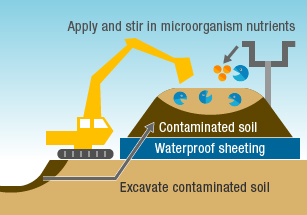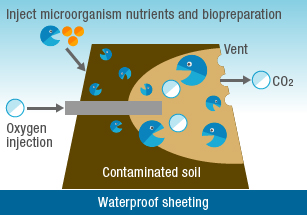On-site mixing is performed by spraying an aqueous solution combining a biopreparation, microorganism nutrients, and other ingredients onto contaminated soil, and then using a large power blender and backhoe to mix the soil. Implementation of this method requires a wide open space, but mixing enhances the effectiveness of the biopreparation. On-site mixing is appropriate when pollutants are near the surface of the soil.
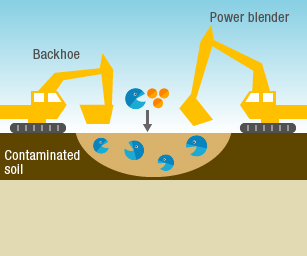
In on-site injection, contaminated soil is remediated without excavation. Injection wells are installed and used to inject biopreparation, microorganism nutrients, and oxygen into the ground. Decontamination and equipment installation can be performed even if buildings or other objects are located on top of the soil to be decontaminated.
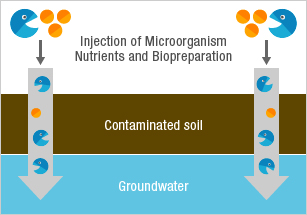
Our groundwater decontamination system combines a biopreparation and proprietary wastewater treatment equipment. This system effectively breaks down and removes oil, trichloroethylene, benzene, and other pollutants as it decontaminates groundwater.
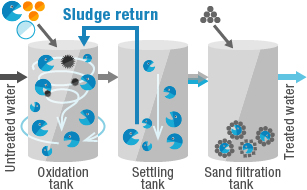
Land farming is a bioremediation approach in which a relatively thin layer of contaminated soil near the surface is excavated and then transferred to another location, where a biopreparation and microorganism nutrients are mixed into the contaminated soil. Bringing soil to the surface and mixing it improves aeration and stimulates the activity of microorganisms. This method requires a large power shovel and blender, as well as a wide open space.
Biopiling is a remediation method in which contaminated soil is formed into a pile and oxygen is forced into the pile through pipes buried within the pile to promote the breakdown of pollutants by microorganisms. Biopiling is appropriate when remediation will be performed within a limited space.
